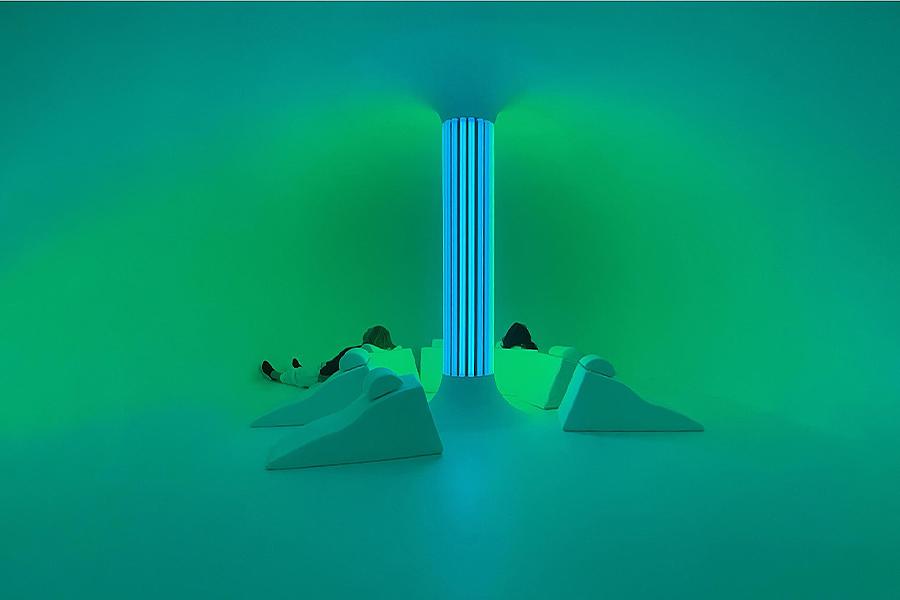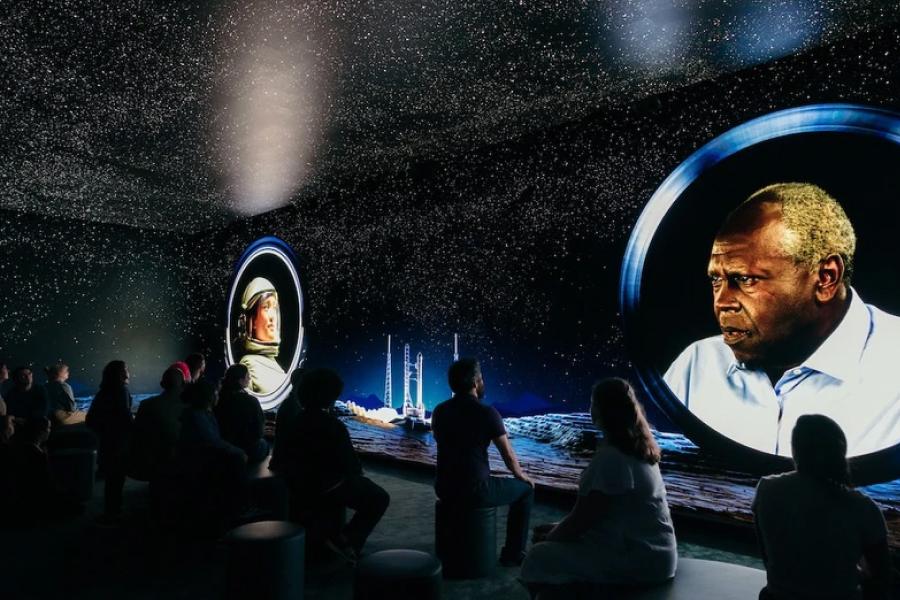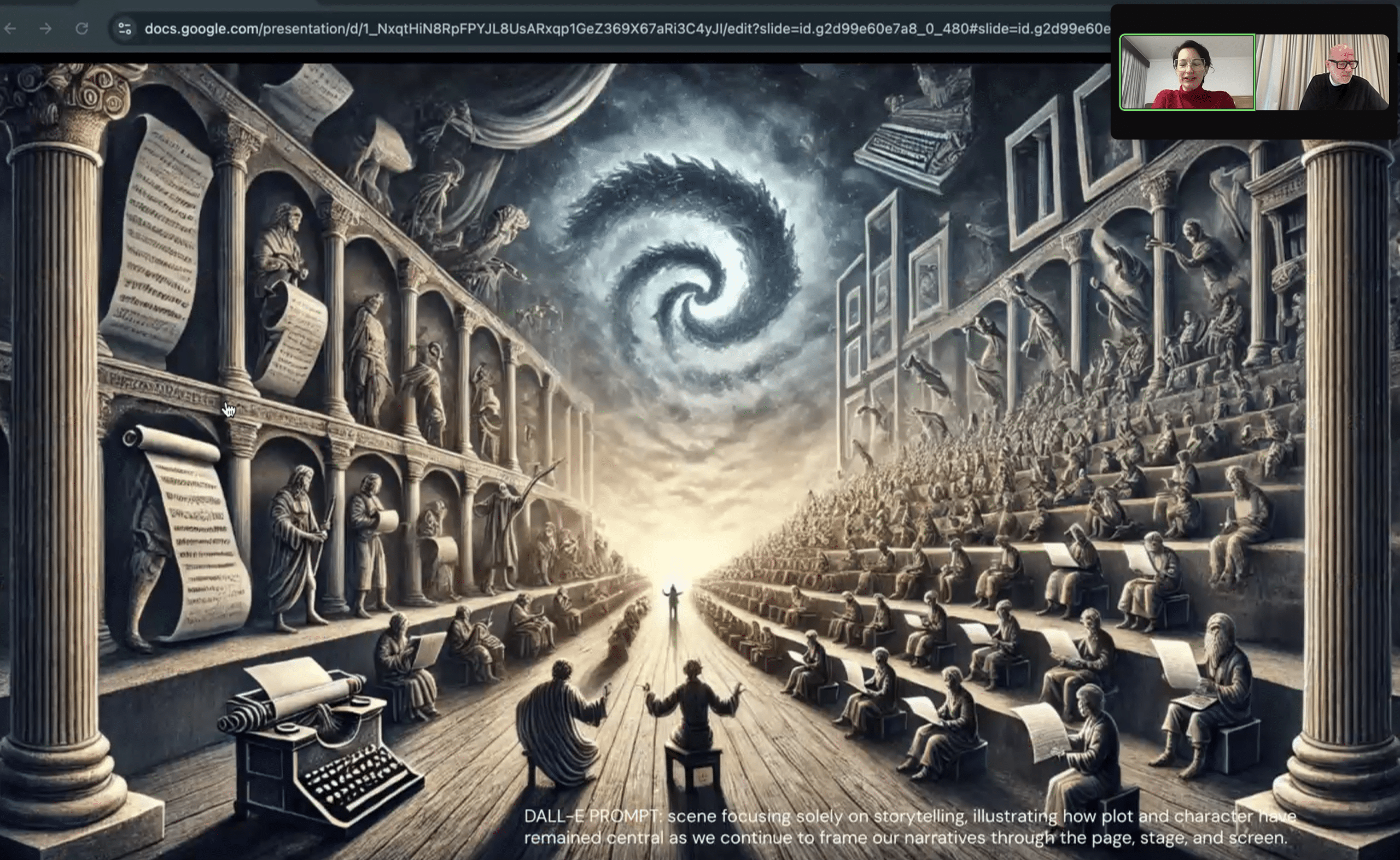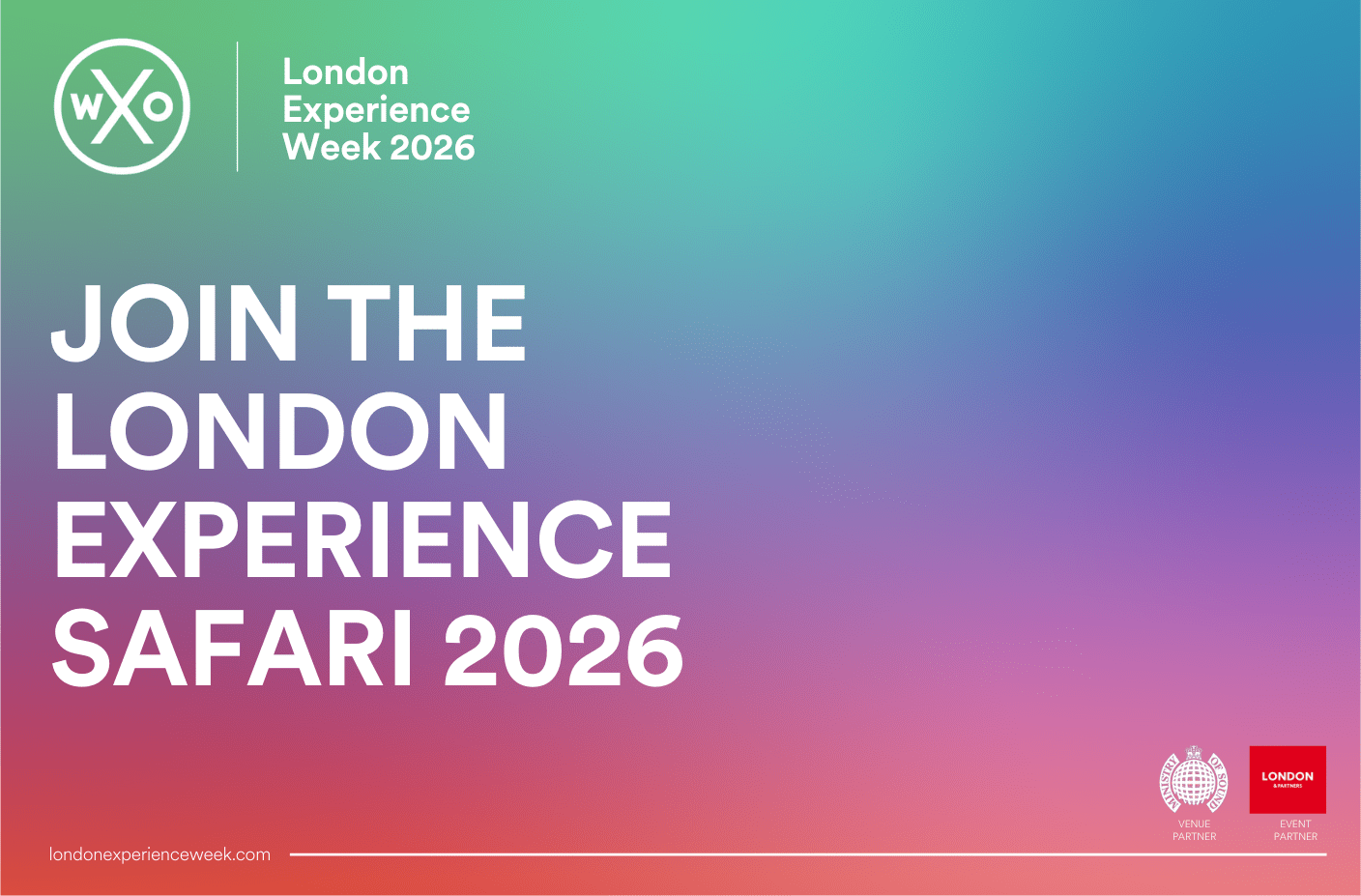What does awe mean in the context of designing experiences – and where do you begin if you want to design awe-filled experiences that are moving and memorable?
This guide, part of our World Experience Glossary, gives an overview of awe in experiences, as well as links to relevant think pieces, WXO Campfire reports and experience case studies on the topic of inspiring awe in experience design.
Creating awe-inspiring experiences is an art that blends science, nature, and human perception. Understanding how to design awe in experiences requires delving into the realms of neuroscience and neuroaesthetics, exploring how our brains respond to stimuli that evoke wonder.
Awe – or small “t” transformative experiences – can be found in both everyday life, through simple activities and experiences such as walking in nature, listening to music, and contemplating big ideas. Meanwhile big “T” transformative experiences that arise from feelings of awe can change the very fibre of who we are.
Nature plays a pivotal role, as its vastness and beauty often trigger profound feelings of awe. Equally crucial is the engagement of our senses and bodies, which can profoundly enhance the experience. Experience designers are playing with these and other techniques to create experiences that are ever more memorable, meaningful, and transformative.
This guide will walk you through the essentials of crafting awe in your experiences, from harnessing the power of play and perspective to the subtle art of wondermaking and the significance of ritual.
The Classic Definition Of Awe
What Is Awe?

Awe is a complex emotional response often described as a mix of wonder, amazement, and a sense of something greater than oneself. It’s triggered by vastness, whether physical, conceptual, or social, that challenges our understanding of the world. This emotion can be sparked by grand natural landscapes, impressive human achievements, or even profound ideas and theories.
The need for accommodation is a component of awe, where individuals adjust their mental frames according to new, unusual, and grand experiences. Awe not only makes us feel small in the grand scheme of things, but also connects us to something bigger. It can lead to a feeling of humility, shifting our perspectives and altering our sense of time and space. Understanding awe is essential for designing experiences that leave a lasting impact, as it engages both our minds and our emotions in a profound way.
Historical Perspectives on Awe
Throughout history, awe has been a central theme in various cultures and philosophies. Ancient Greek philosophers like Plato and Aristotle saw awe as the beginning of wisdom and a trigger for philosophical inquiry. In religious texts, awe is often linked to divine encounters and moments of spiritual revelation. For example, in the Bible, awe is frequently associated with the fear of God and the profound respect for his creations.
During the Romantic period, poets and artists like William Wordsworth and Samuel Taylor Coleridge celebrated awe as a vital response to the sublime in nature. They believed that experiencing awe could lead to a deeper understanding of the human condition and the natural world. These historical perspectives highlight awe’s enduring significance and its ability to inspire, educate, and transform.
Modern Interpretations of Awe Inspiring Experiences
In contemporary times, awe is studied through the lens of psychology and neuroscience, offering new insights into its effects and significance. Researchers have found that experiencing awe can have profound psychological benefits, including increased well-being, reduced stress, and enhanced creativity. Different techniques can elicit awe, such as through nature, music, visual art, and virtual reality (VR), leading to improved well-being and pro-social behaviors.
Modern interpretations often focus on how awe can foster a sense of connectedness and promote altruistic behaviour. For instance, witnessing something awe-inspiring, like a full starry sky at night or a grand architectural feat, can make individuals feel part of a larger community. Additionally, studies in neuroaesthetics explore how awe activates specific brain regions associated with emotion and cognition, helping us understand its impact on our mental state. These modern interpretations underscore the importance of designing experiences that evoke awe, as they can lead to meaningful changes in how we perceive and interact with the world.
Awe in Neuroscience & Neuroaesthetics

Brain Responses to Awe
When we experience awe, our brains undergo significant changes that can be measured and analysed. Neuroimaging studies have shown that awe activates several areas of the brain, including the prefrontal cortex, which is involved in complex cognitive functions and decision-making. Additionally, the anterior cingulate cortex, associated with emotion regulation and social behaviour, also shows increased activity. These brain responses suggest that awe not only affects our thoughts and emotions but also our social interactions and behaviours.
Furthermore, research suggests that the release of neurotransmitters like dopamine and oxytocin during awe experiences can lead to enhanced feelings of happiness and other positive emotions. Understanding these brain responses provides valuable insights into why awe-inspiring experiences leave such a lasting impact and highlights the potential for designing environments and activities that harness the power of awe.
In Doing Drugs Together: The Power Of Interoception In Experience, we discover how simple rituals like stretching out your tongue can stimulate dopamine and dancing or marching together can stimulate oxytocin, bonding people together – what horror experience designer Michael Badelt calls “playing the hormone piano“.
Neuroaesthetics and Emotional Impact
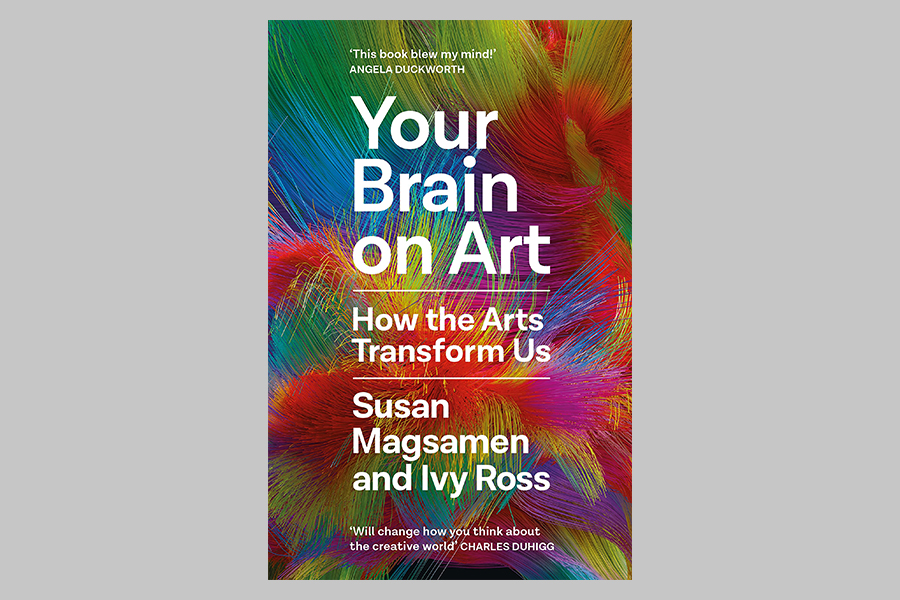
Neuroaesthetics is the study of how our brains perceive and respond to art and beauty. When it comes to awe, neuroaesthetics explores how aesthetic experiences can elicit profound emotional responses. Research indicates that viewing beautiful art or listening to moving music can trigger awe, activating brain regions linked to pleasure and reward. This emotional impact is not just a fleeting feeling but can lead to lasting psychological benefits, such as improved mood and a greater sense of well-being.
Through neuroaesthetics, we understand that the elements of art and beauty can be deliberately designed to evoke awe, as Susan Magsamen, Founder and Director, International Arts + Mind Lab, Center for Applied Neuroaesthetics, John Hopkins University School of Medicine, and Ivy Ross, VP of Design for Hardware Product Area, Google, outline in their brilliant book Your Brain On Art, in which they quote Richard Kamler:
““Art is our own true global language. It speaks to our need to reveal, heal and transform. It transcends our ordinary lives and lets us imagine what’s possible.”
Magsamen and Ross also highlight that:
- Engaging in an art project for as little as 45 minutes reduces the stress hormone cortisol, no matter your skill level.
- Just one art experience per month can extend your life by ten years.
- Playing music builds cognitive skills and enhances learning, and the vibrations of a tuning fork create sound waves to counteract stress.
This knowledge is invaluable for creators and designers aiming to craft experiences that are not only visually or aurally stunning but also emotionally resonant. By leveraging the principles of neuroaesthetics, we can create environments and experiences that deeply move and inspire people.
Scientific Studies on Awe
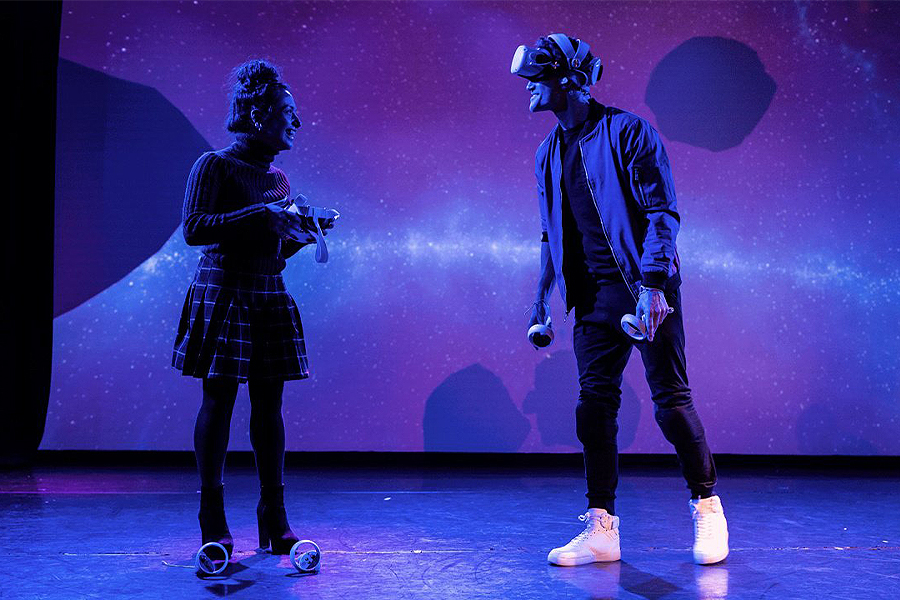
Scientific studies have increasingly focused on understanding how awe affects the human brain and behaviour. One notable study by Keltner and Haidt found that awe leads to a diminished sense of self and promotes a feeling of connection to others, fostering social cohesion and altruistic behaviour.
As Creative Director Jasmin Jodry highlights in How To Create Indelible Memories and Transformation Through Immersive Experiences:
“Awe is the emotion we experience when we encounter mysteries and wonders beyond our comprehension. Beau Lotto describes how people who feel connected can experience a boost in pro-social behavior because they ‘have less need for cognitive control’ and can enter conflict ‘to seek to understand rather than convince.’
In that sense, awe-inspiring artistic experiences transport us into imagination and dreams, and lead us to greater understanding and empathy that radiate into the larger world.”
Additionally, experiments involving virtual reality have demonstrated that even simulated awe-inspiring environments can evoke strong emotional responses, alter perception and promote connection. Whitton Frank, producer and performer at Ferryman Collective, believes that one of VR’s greatest assets is that it gives people the ability to truly connect with each other in a meaningful way that feels “real and wonderful”.
Participants experience the beauty and wonder of the virtual world with intimacy, connection and emotional resonance, in an experience they can all share by helping, talking and being a little vulnerable. In Can We Create Intimacy & Vulnerability Through VR? she says:
“The creative show will be grounded in the heart with a strong foundation of the human experience, so that when the element of awe-inspiring visuals is added, it gives the audience an experience that can only be found in the realms of this new emerging storytelling genre.”
These perspectives and other scientific studies highlight the transformative power of awe and provide a foundation for designing experiences that provoke awe and can positively impact mental and physical well-being. Understanding these findings is crucial for anyone looking to harness the benefits of awe in various fields of experience design, from healthcare to education.
The Role of Nature in Awe
Natural Landscapes and Perceived Vastness

Natural landscapes have a unique ability to evoke awe, thanks to their sheer vastness and beauty. Imagine walking up a hill into a meadow filled with wildflowers, butterflies fluttering around, a clear stream flowing gently, and a rainbow arching across the sky—an awe-inspiring experience that leaves you breathless and moved to tears. Majestic mountains, expansive oceans, and sweeping deserts often leave us feeling small yet connected to something greater than ourselves.
Scientific research supports this, showing that exposure to nature can significantly enhance well-being and reduce stress. When we encounter grand natural scenes, our brains respond with a mix of wonder and admiration, often leading to a heightened sense of presence and mindfulness. These experiences can also foster a deeper appreciation for the environment, encouraging more sustainable behaviours. Incorporating natural elements into designed experiences—whether through biophilic design in architecture or immersive nature-based activities—can effectively evoke awe and its associated benefits. Understanding the power of natural landscapes is essential for creating awe-inspiring experiences that resonate on a deep, emotional level.
The Connection Between Nature, Wellbeing, and Awe Walks
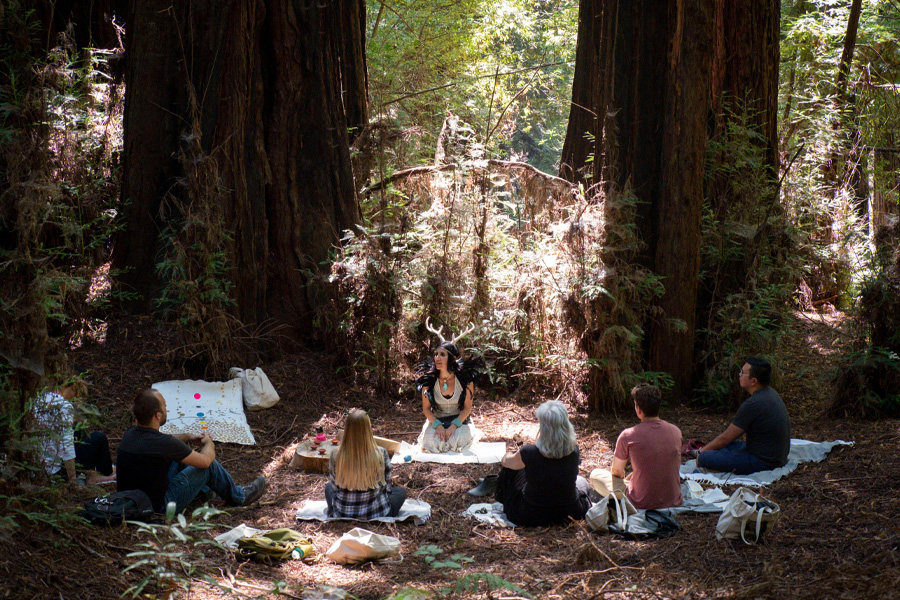
The connection between nature and well-being is well-documented, with numerous studies highlighting the positive effects of natural environments on mental and physical health. Spending time in nature has been shown to reduce stress, lower blood pressure, and improve mood. This phenomenon, often referred to as “biophilia,” suggests that humans have an innate affinity for the natural world.
Experiences that evoke awe in nature, such as witnessing a breathtaking sunset or standing at the edge of a vast canyon, can amplify these benefits. The sense of awe can lead to increased mindfulness, a state of heightened awareness and presence that contributes to overall well-being. Moreover, nature-based activities like hiking, bird-watching, and gardening can provide a sense of purpose and fulfilment, further enhancing mental health. Understanding this connection is crucial for designing experiences that not only inspire awe but also promote holistic well-being.
In The Art Of Wondermaking, Barbara Groth, Founder and Creative Director of the Nomadic School of Wonder, emphasises the importance of nature as one of the ingredients of “wondermaking” – alongside play, belonging, art, mystery, magic and more. Groth hosts group experiences in awe-inspiring locations such as Fogo Island in Newfoundland, but also explains that a “wonder walk” in nature or even in urban surroundings can be equally awe-some if we truly pay attention to the wonder all around us.
“Wonder isn’t only reserved for creative retreats in wild locations. We all have access to it in our everyday lives. We can tap into wonder through:
- Paying attention and activating our full sensory awareness
- Going for daily “Wonder Walks” where we tune into nature and the unexpected
- Play
- Making art
- Writing fairy tales. Start with ‘Once upon a time…’ and you’ll be amazed where it takes you and what kind of wisdom emerges.”
Importance of the Senses and the Body
Engaging the Senses
Engaging the senses is crucial for creating awe-inspiring experiences. Our senses—sight, sound, smell, touch, and taste, as well as additional senses such as interoception, proprioception and vestibular—are gateways to the world around us and play a vital role in how we perceive and respond to our environment. Visual stimuli can captivate us, whether it’s the vibrant colours of a sunset or the intricate details of a piece of art.
Sound, too, can evoke awe, from the powerful resonance of a symphony to the soothing sounds of nature. Aromas, like the scent of blooming flowers or freshly baked bread, can trigger emotional memories and enhance the experience. Tactile elements, such as the texture of a sculpture or the feel of a gentle breeze, add another layer of engagement. Even taste can play a role, as in the case of a gourmet meal that delights the palate. By thoughtfully engaging multiple senses, we can create richer, more immersive experiences that evoke awe.
Sensory Design Techniques
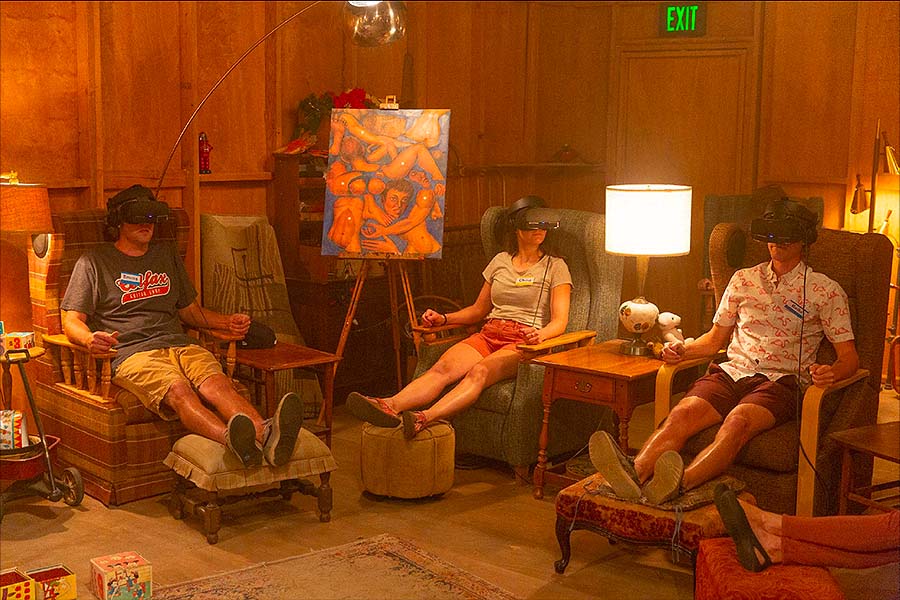
Sensory design techniques are essential for crafting experiences that fully engage and captivate the audience. One effective technique is multi-sensory integration, which involves combining visual, auditory, and tactile elements to create a cohesive and immersive environment. For instance, a museum exhibit might use dim lighting, ambient soundscapes, and interactive displays to draw visitors into a historical narrative.
Another technique is the use of contrasting sensory stimuli to surprise and delight. This could be as simple as combining a visually stark space with unexpected bursts of colour or texture. Additionally, incorporating natural elements like plants, water features, and natural light can significantly enhance sensory engagement. Scent diffusers can be used to introduce subtle, pleasing aromas that complement the visual and auditory experience. In David Byrne‘s neuroscience-inspired experience Theater of the Mind, for example, VR works in combination with scent and movement to trigger a feeling of embodiment, as Director Andrew Scoville explains:
“We worked with a scent specialist specifically for the smell of grass, in our attempt to poke at the feeling of ownership. We primed people to tune in to that part of their experience to get them to start thinking about it, so the grass could be more effective. While it didn’t necessarily smell like ‘real’ grass, the whole show has a later of artifice that’s a bit uncanny. At this point, you’re hopefully enough removed from reality that your disbelief has been suspended to the point where it’s delightful rather than cynical.”
By employing these sensory design techniques, creators can evoke powerful emotions and a sense of wonder, making the experience memorable and impactful.
Functional Experiences
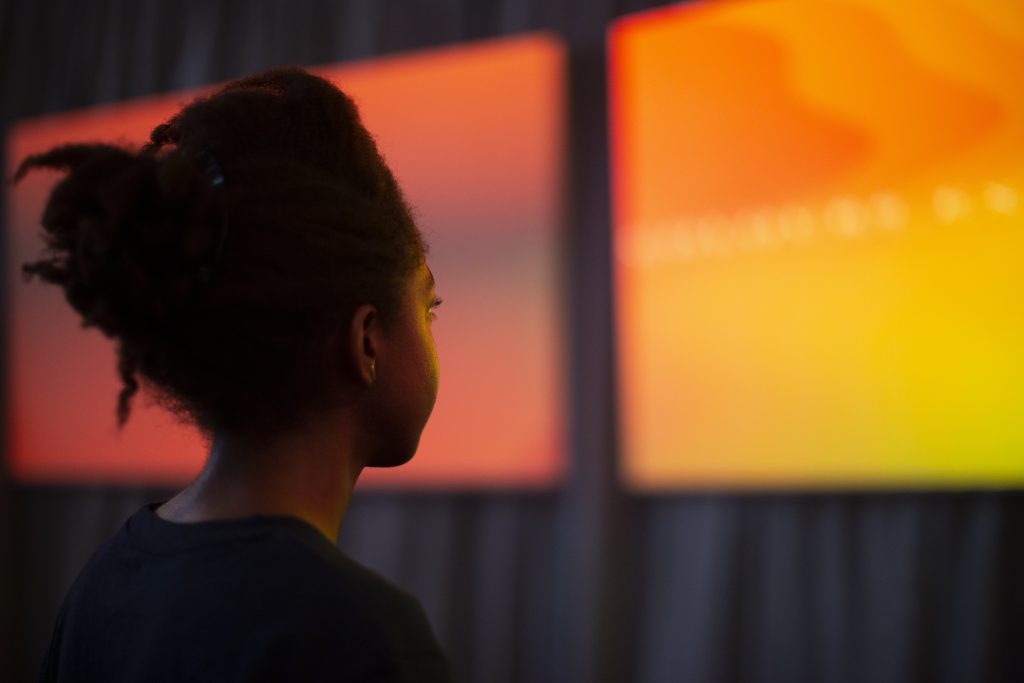
Functional foods or nootropics – engineered products that offer brain-boosting properties, such as coffee or cannabis gummies, detox drinks or personalised vitamin packs, for example – have long moved beyond Silicon Valley’s bright young things and into the mainstream. Why choose junk or even “normal” food, when you can opt for something that will speed up your ongoing quest for self-optimisation?
And now we’re seeing the rise of “functional experiences” based on insights from neuroscience and other scientific research. These make you smarter, happier, more curious and more creative. By using sensory stimulation – or deprivation – to access dream, hypnagogic or even psychedelic states, they have the potential to help us rewire our minds and emerge as stronger, better people – the ultimate realisation of what Joe Pine calls the transformation economy, or “New You” business.
In The Visionary Power Of The Eyes-Closed Experience, artistic director Jennifer Crook shares how she built the Dreamachine, an immersive eyes-closed artwork which blends neuroscience, architecture, music and technology to explore the mysteries of consciousness in what could be the most remarkable social project of its kind. The experience reinforces the value of “small awe”. We often speak about the tremendous amazement of nature and how it makes us feel small – but the kind of awe we experience at Dreamachine makes us go inward and see how vast this internal landscape can be.
“The quiet, personal and profound to one person can often get lost in the metrics, scale and spectacle. But the small and intimate is something we need to hang on to. It can be transformative.”
Embodied Experiences
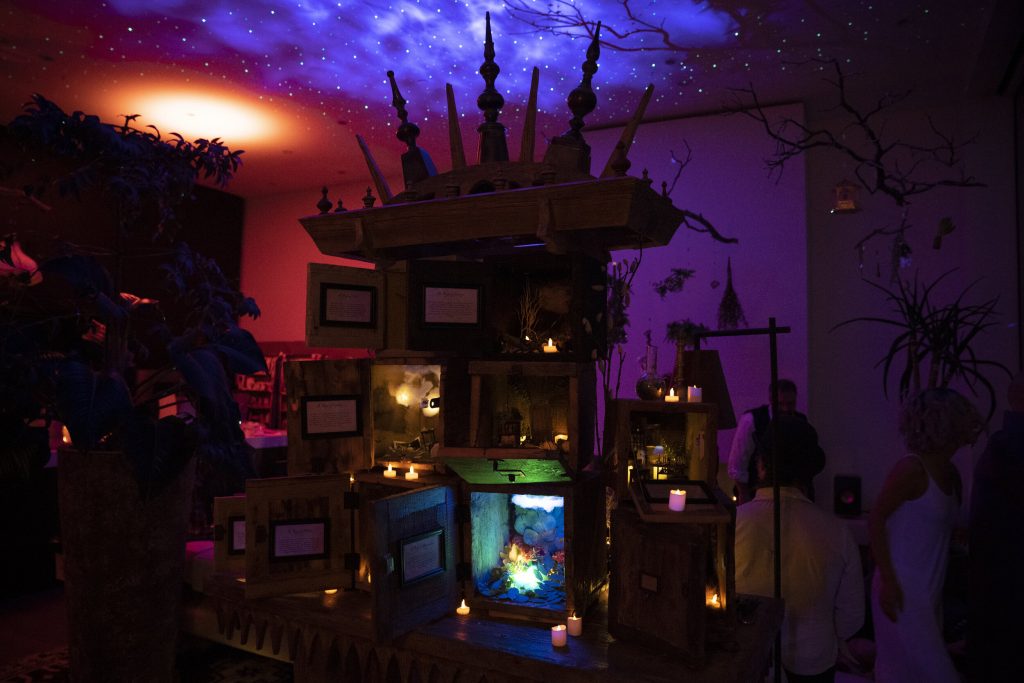
Embodied experiences engage not just the mind, but the entire body, creating a holistic sense of awe and immersion. Physical interaction and movement can make individuals feel awe, enhancing the overall experience. These experiences are grounded in the idea that our physical presence and movements contribute to how we perceive the world. For example, walking through a dense forest, feeling the uneven ground underfoot, and hearing the rustling leaves all contribute to a deeper connection with nature.
In the realm of design, creating opportunities for physical interaction can enhance the sense of awe. Interactive art installations that require touch or movement, such as walking through a mirrored maze or participating in a light and sound show, can make the experience more engaging. Virtual reality (VR) is another powerful tool for crafting embodied experiences, allowing users to explore and interact with digital worlds in a physically immersive way. By focusing on embodied experiences, designers can create memorable, awe-inspiring moments that resonate on multiple levels.
In Somatic Practice For Experience Designers, Marissa Nielsen-Pincus, Associate Artistic Director at Third Rail Projects, shares how by developing deep awareness of one’s own ever-shifting internal landscape, we gain the capacity to attune to, connect with, and shape the experiences of others. We can use tools from somatic practice and embodied intelligence to better connect with our audience, using non-verbal communication, eye contact, spatial relationships, mirroring, breath and touch to move people into a state where they are more open to awe.
And in Emotional Alchemy: Experience Design for Altered States of Consciousness, former Lead Experience Designer at Meow Wolf and the Founder of No Sleep Studio, Laika O’Brien, uses somatic sensations to access “waking dream states” that can be deeply profound and transformative.
“Our somatic experience, innate connection to nature, and ability to engage with our senses can transport us to truly fantastical places and intentional experience design can be a powerful tool to get us there. And since we live in our bodies, the potential to access waking dream states is with us all the time.”
The Overview Effect and Perspective
Understanding the Overview Effect
The Overview Effect is a phenomenon experienced by astronauts when they view Earth from space. This unique vantage point often leads to a profound realisation of the planet’s fragility and interconnectedness. Astronauts report feelings of awe, a deepened sense of responsibility for the environment, and a renewed appreciation for human unity. As we explore in our piece on neuroaesthetics, they all come back with the same story about looking back at the world and returning changed. They become kinder and more pro-social, and increase their connection with nature in the long term.
The Overview Effect demonstrates the power of perspective in evoking awe and shifting our understanding of the world. By seeing the Earth as a small, delicate sphere in the vast expanse of space, individuals often experience a cognitive shift that emphasises the importance of global cooperation and environmental stewardship.
This concept can be applied in various fields, from education to architecture, by creating experiences that offer new perspectives and encourage a broader view of the world. Understanding the Overview Effect can help designers and creators develop awe-inspiring experiences that foster a sense of connection and responsibility towards our planet.
Perspective Shifts in Design
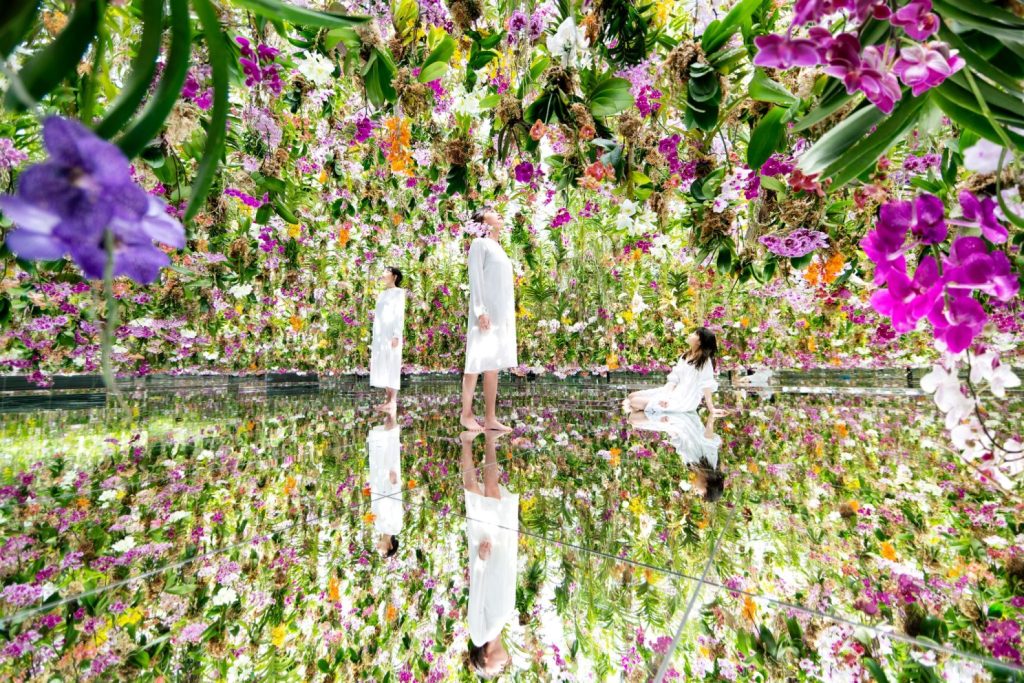
Perspective shifts in design can create powerful, awe-inspiring experiences by encouraging individuals to see the world differently. One effective technique is to use scale creatively, such as designing spaces that make people feel small in comparison to their surroundings, similar to how the Overview Effect makes astronauts feel. This can be achieved through towering structures, expansive interiors, or panoramic views.
In Neuroaesthetics: Where Neuroscience Meets Experience Design, neuroscientist Katherine Templar-Lewis says:
“When we experience awe, our ego and internal worry shuts down – and this can be so profound that it has a long-term impact. A particular pattern of brain activity is disrupted in the default-mode network where our ego is located – the same pattern noticed in the effects of psychedelics. Not everyone can access space, of course, but you can experience awe just by looking at a tree. And in immersive experiences and through tools like VR, you can also play with perspective.”
Another approach is to incorporate unexpected viewpoints, like elevated walkways or transparent floors, which offer new angles and insights. Interactive installations that change based on the viewer’s position or movement can also foster a dynamic sense of perspective. Additionally, using mirrors and reflective surfaces can multiply and distort views, creating a sense of infinite space. By intentionally designing for perspective shifts, creators can evoke a sense of wonder and encourage users to rethink their relationship with their environment. This not only enhances the aesthetic experience but also promotes deeper reflection and connection.
Techniques for Creating Perspective Shifts in Virtual Reality
Creating perspective shifts in design can significantly enhance the sense of awe and engagement. Not all awe experiences are the same, ranging from gentle awe during a walk through the woods to life-changing awe at significant events or places. One effective technique is the use of forced perspective, where the scale of objects is manipulated to create illusions of depth and space. This method is often employed in architecture and theme parks to make structures appear larger or smaller than they are.
In Magic Design: The Missing Ingredient In Many Experiences, magician and VR experience designer Curtis Hickman plays with perspective, the art of physical and psychological misdirection, concordance and “aliefs” to trigger feelings of awe in his audience. Talking about his VR experience The Void, Hickman says:
“People very quickly got comfortable with the idea of leaning on digital walls, which in a normal virtual game is a really bad idea. But in The Void, they would get used to it and their alief system would connect to it. And then they’d step out onto the edge of a cliff that’s very narrow and had a huge drop off. And they’d get scared. It created a great vista, but it also created this tense moment.
They couldn’t help it: this fear of falling to your death is an alief system that is embedded into us. Even people that are seasoned at VR are still not comfortable with heights in VR. So now I’ve skipped over the part where I have to get them to believe that they’re in a virtual world, because they alieve it.”
Another technique is the strategic use of viewpoints, such as placing observation decks at high elevations or designing windows that frame specific vistas, encouraging viewers to see familiar landscapes in a new light. Incorporating elements like mirrors and reflective surfaces can also create dynamic visual effects, multiplying and altering perceptions of space.
In Theater of the Mind, space, science and story combine in a “mix-y, swirly soup”, according to its Director, Andrew Scoville. In the “Disco” room, for example, the objective was to play with the scientific phenomenon of motion-induced blindness, or the idea that our eye favours things in motion. The inspiration was a scientific paper called “Self and world: large-scale installations at science museums” by Shinsuke Shimojo, which offered suggestions on how to generate higher emotional impact.
Additionally, interactive installations that change based on the viewer’s position or movement can offer ever-shifting perspectives, making the experience more immersive. By employing these techniques, designers can craft environments that surprise, delight, and inspire awe, encouraging users to explore and reflect on their surroundings in novel ways.
The WXO Take-Out
When wondering how to design awe in experiences, it all comes back to how we might shift someone’s perspective – of their immediate environment, the people or community around them, the wider world, and themselves.
Both experiences of big-T Transformation and small awe can inspire these changes, which can be accessed through immersion in nature, sensory stimulation or deprivation, spatial design, the clever integration of emerging technology like VR, embodiment, and simply paying attention.
So next time you’re designing an experience, ask yourself:
- How might I play with the senses to drop people into their bodies and new states of perception?
- How might I integrate technology like VR with story, science and space to have the biggest impact?
- What opportunities and moments for reflection – small and large – might I be able to design into my experience?
To hear experience design insights like these from experience innovators in live Campfires, at our annual Summit and throughout the year as part of the WXO community online, learn more about how to join the WXO today.

